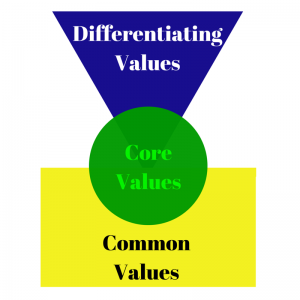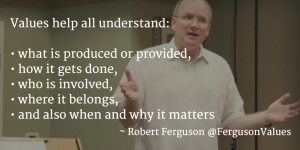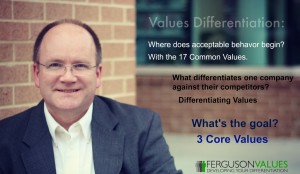Building a successful business painting “happy little trees”
 I recently watched a documentary about the late Bob Ross, who hosted the famous television show “The Joy of Painting.” For 11 years, Ross was known for his soothing voice, laid-back attitude, his big bushy hair, and being simply – happy.
I recently watched a documentary about the late Bob Ross, who hosted the famous television show “The Joy of Painting.” For 11 years, Ross was known for his soothing voice, laid-back attitude, his big bushy hair, and being simply – happy.
Ross used the wet-on-wet style of oil painting and his specialty was painting landscapes that included mountains, lakes, and “happy little trees.” To give you a sense of his style, watch a few short clips from his TV shows:
http://www.youtube.com/watch?v=i3RYOawNITs
http://www.youtube.com/watch?v=MghiBW3r65M
So, can someone really build a successful business this way?
Bob Ross did.
A different kind of business model
Consider this: Ross produced all of his TV programs free of charge and donated all the paintings he made on the show to PBS stations around the country as part of their fundraising efforts.
Yet, with the help of his business partners, Annette and Walter Kowalski, Bob Ross built a $15 Million business. His revenues were generated from selling books, videotapes (this was the 1980s!), profits from certified Bob Ross teachers, and his own line of art materials.
Some view that Ross became successful by luck or in spite of himself. I don’t agree.
Differentiating Values of Bob Ross
As I watched this documentary, it didn’t take long to realize Bob Ross was living according to his values. His uniqueness – and competitive advantage – was clearly defined by a strong set of differentiating values.
Here are three values, and their meanings, that I observed in Ross:
– Happiness: state of well-being with emotions ranging from contentment to intense joy.
– Calmness: composure; being free from agitation, excitement, or disturbance.
– Kindness: warmhearted and considerate; humane and sympathetic; charitable.
The primary value displayed by Ross was happiness. This is also evident from a quote he made when asked about his laid-back approach to painting and his calm and contented demeanor. Ross stated:
”I got a letter from somebody here a while back, and they said, ‘Bob, everything in your world seems to be happy.’ That’s for sure. That’s why I paint. It’s because I can create the kind of world that I want, and I can make this world as happy as I want it. Shoot, if you want bad stuff, watch the news.”
Leadership Values of Bob Ross
I also observed other values that tended to be more leadership drivers vs. developing differentiation. They include:
– Vision. Ross had a clear vision of sharing what lived within him with others – the joy of painting.
– Preparedness. Amazingly, Ross actually created a complete original before every show. He knew exactly what he was going to paint. He even commented that he imagined every brush stroke before each session.
– Commitment. Ross was dedicated to his mission of happy painting and the vision of sharing with others. He never wavered in his focus.
– Education. Ross loved to teach. It’s where he started, and his TV shows were just a vehicle to instruct more people in the knowledge and skills he had obtained.
– Sharing. Ross held nothing back. He shared all of his assets, from his time and talent, to the TV shows, to the actual artwork he produced.
Ross was a leader in his own right. Countless numbers followed him on TV, adored him in his classes, and emulated him in their paintings. His business success was the result of both his leadership values and differentiating values.
A favorite quote from Ross is “We don’t have mistakes here, we just have happy accidents.” For his followers, he created hope through his powerful differentiating value of happiness.
Sadly, Ross died in 1995 at the young age of 52, from lymphoma. But reruns of his TV shows continue to be broadcast around the world. The business of Rob Ross remains with more teachers being certified in his methods every year, and his materials and art supplies available online.
And his legacy lives on – with thousands of people who can paint “happy little trees.”
Who else do you know has built a business on the value of happiness?







